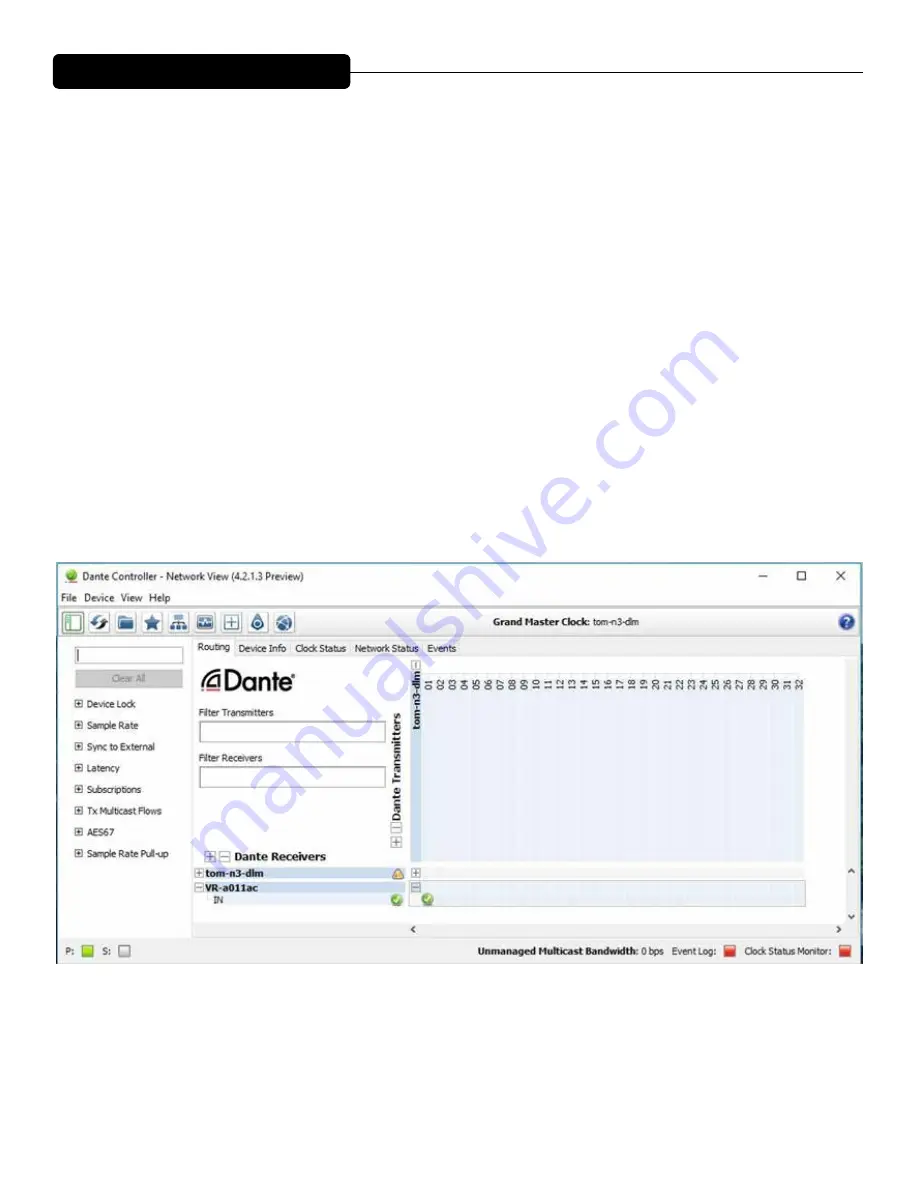
6
Dante Operation
The Dante interface allows digital audio to be used as the input source and can be selected in the VR-Pro Series
control application. The transmit and receive routings for all connected Dante devices are set using Dante Con-
troller software. The VR-Pro system does not transmit and only receives digital audio.
The Dante interface on the VR is 1000 BT Ethernet, requiring standard Category 5e or Cat 6 wiring. It has an
internal network switch to allow daisy chaining to another unit. Too many switches in the path will cause latency
problems, so it is best to use a multi-port gigabit network switch to feed the units. (For more information on the
Dante network speed and switch requirements, go to www.Audinate.com).
Dante Controller is the software program that is essential for configuring your network and is available as a free
download at the Audinate web site. Dante Controller is used to route signals between devices on the network
and change device settings. These are then stored in the Dante devices. Once configured, the transmitting de-
vice sends to the receiving device, which in this case is the VR-Pro. The interface supports sample rates of 48 kHz
(Default), and 96 kHz.
Below is an example of a Dante network. Digital audio is routed from a Nion to the VR-Pro. The vertical col-
umns are transmitter channels, the horizontal rows are receiver channels. In this example Nion channel 01 is
sending to VR-Pro receive IN. Any transmit channel on any device can send to a receive channel on any device
as long as it is not to itself. Multiple receivers can be connected to a single transmitter. All devices on the net-
work must have the same sample rate settings.
*Tom-n3-dlm is a Media Matrix Nion N3, VR-a011ac is the VR-Pro speaker.







































